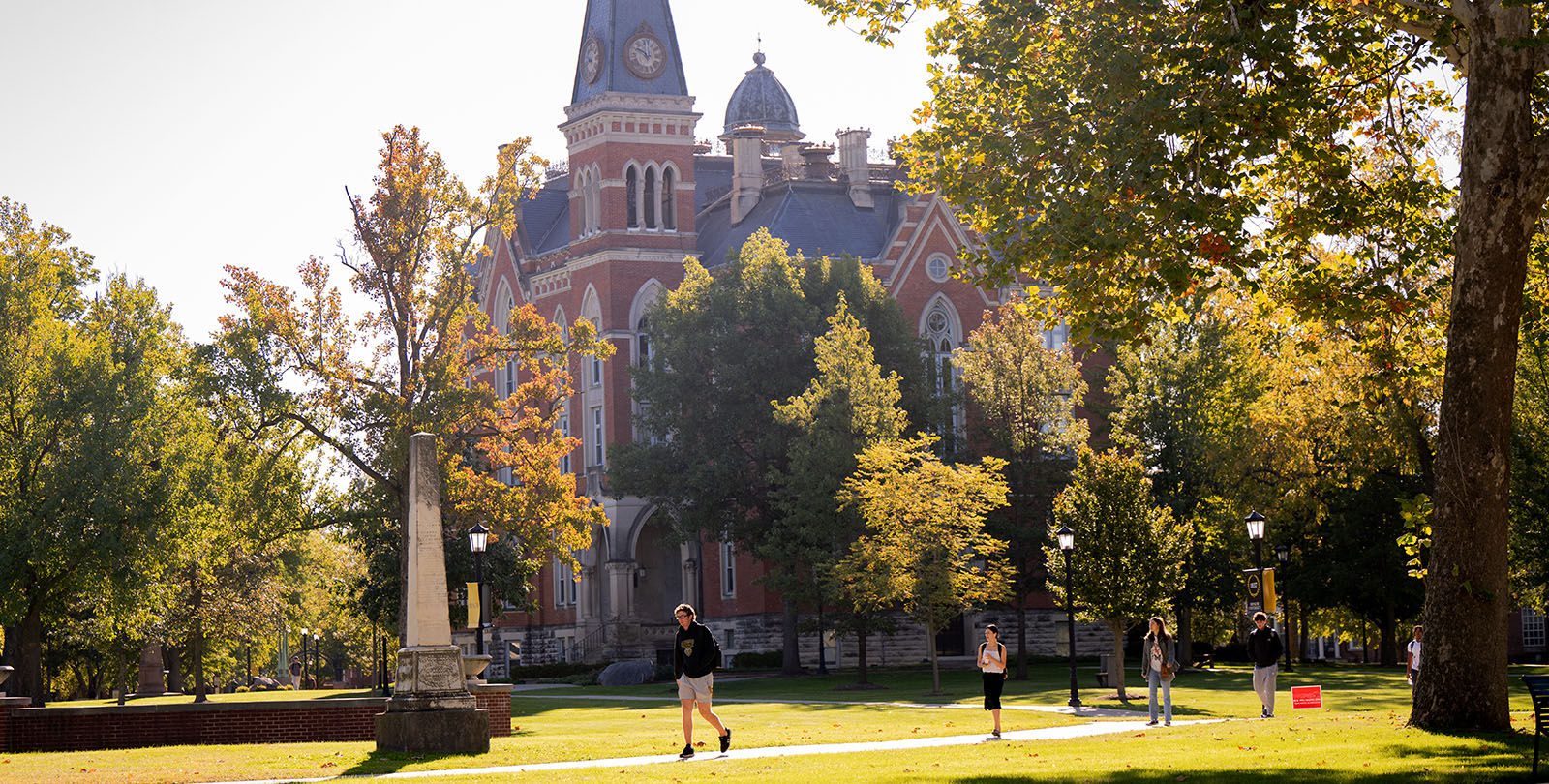NOVA Back on Campus as Work on Percy Julian Documentary Continues
June 22, 2004
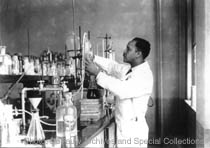 June 22, 2004, Greencastle, Ind. - A videographer for the PBS program NOVA is on the DePauw University campus today, collecting footage for an upcoming two-hour documentary on the legendary chemist and 1920 DePauw University graduate Percy Lavon Julian. NOVA has made several trips to the Greencastle campus since May 2002, when production of the program began. Today's agenda included getting video footage of historic East College and of the bust of Dr. Julian which is displayed in the atrium of DePauw's Percy Lavon Julian Science and Mathematics Center.
June 22, 2004, Greencastle, Ind. - A videographer for the PBS program NOVA is on the DePauw University campus today, collecting footage for an upcoming two-hour documentary on the legendary chemist and 1920 DePauw University graduate Percy Lavon Julian. NOVA has made several trips to the Greencastle campus since May 2002, when production of the program began. Today's agenda included getting video footage of historic East College and of the bust of Dr. Julian which is displayed in the atrium of DePauw's Percy Lavon Julian Science and Mathematics Center.
Franziska Blome, associate producer for the show, says the profile of Dr. Julian is now set to air in the spring of 2006, a year later than originally planned. "The reason is that NOVA wants to commission a book to be 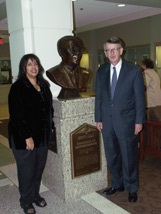 written on the same subject, and -- naturally -- the publication would best coincide with the airdate of our 2-hour special documentary film," she says. (photo at right shows Percy Julian's daughter Faith and DePauw President Robert G. Bottoms with the bust of Dr. Julian on November 1, 2003)
written on the same subject, and -- naturally -- the publication would best coincide with the airdate of our 2-hour special documentary film," she says. (photo at right shows Percy Julian's daughter Faith and DePauw President Robert G. Bottoms with the bust of Dr. Julian on November 1, 2003)
When NOVA first came to campus on May 24, 2002, the program's staff videotaped interviews with professor emeritus of chemistry Donald "Jack" Cook and his wife, Marion, who were friends with Dr. Julian and still communicate with his family, and Wesley J. Lyda, a 1935 DePauw graduate who studied under Julian. Steve Lyons, co-producer and writer of the show, said at the time, "DePauw played a very significant role in Percy Julian's life at several different points. Of course, [Julian] was an undergraduate here, got interested in chemistry under [Professor] William Blanchard, then came back as a research associate in his thirties and made his name in chemistry by synthesizing physostigmine [which allowed affordable treatment of glaucoma]," 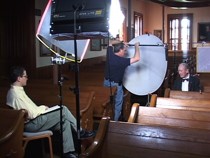 Lyons added. "Those are the two key episodes in his life involving DePauw in his life, and we want to make sure that those are part of the film" (read more here).
Lyons added. "Those are the two key episodes in his life involving DePauw in his life, and we want to make sure that those are part of the film" (read more here).
Born in Montgomery, Alabama in 1899, Percy L. Julian enrolled at DePauw at age 17 and earned his A.B. degree in 1920 with Phi Beta Kappa honors. He subsequently received an M.A. from Harvard University and Ph.D. from the University of Vienna. In 1932, Dr. Julian returned to DePauw where he conducted research 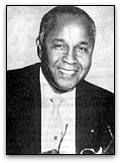 that resulted in the synthesis and identification of physostigmine, which allowed for affordable treatment of glaucoma. Julian later served as director of research for the Glidden Company of Chicago, and later founded the Julian Research Institute. His research led to discoveries in the manufacture of drugs, hormones, vitamins, amino acids, paint and paper, yielding over 100 patents, including a synthetic cortisone called Compound S, and the means of producing two synthetic hormones, testosterone and progesterone. During his lifetime, Julian received fifteen honorary degrees and numerous awards and citations, authored and co-authored more than 160 publications, and was a trustee of five universities, including DePauw. Percy Lavon Julian died in Waukegan, Illinois in 1975.
that resulted in the synthesis and identification of physostigmine, which allowed for affordable treatment of glaucoma. Julian later served as director of research for the Glidden Company of Chicago, and later founded the Julian Research Institute. His research led to discoveries in the manufacture of drugs, hormones, vitamins, amino acids, paint and paper, yielding over 100 patents, including a synthetic cortisone called Compound S, and the means of producing two synthetic hormones, testosterone and progesterone. During his lifetime, Julian received fifteen honorary degrees and numerous awards and citations, authored and co-authored more than 160 publications, and was a trustee of five universities, including DePauw. Percy Lavon Julian died in Waukegan, Illinois in 1975.
